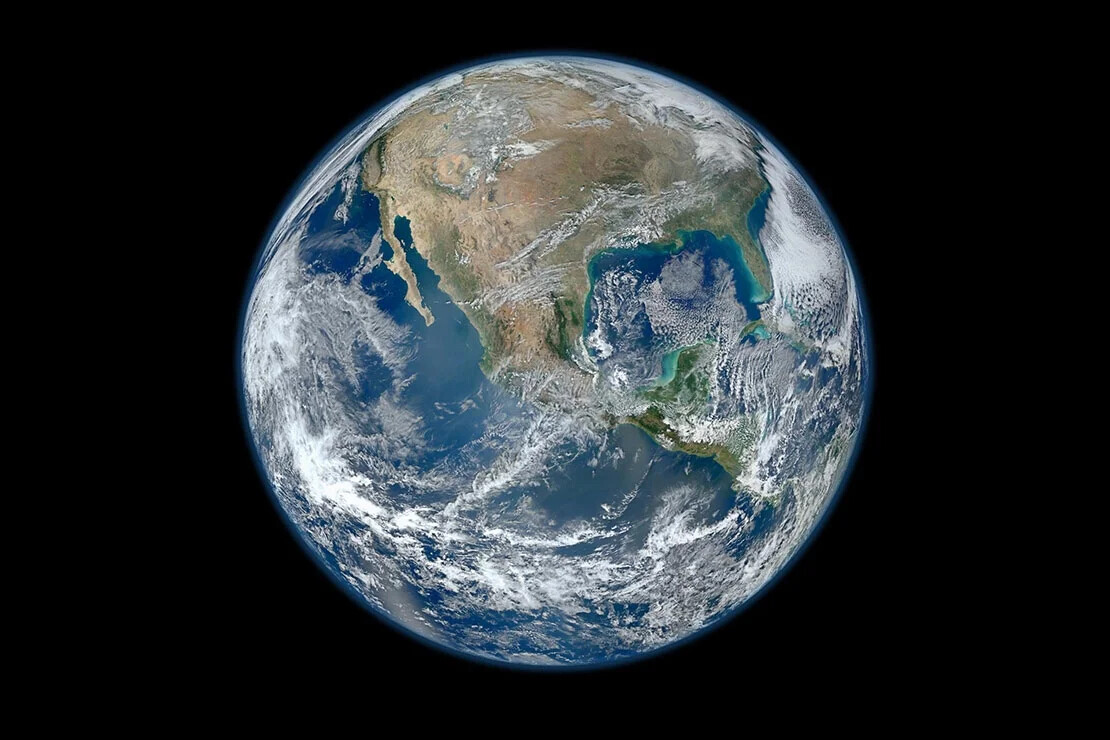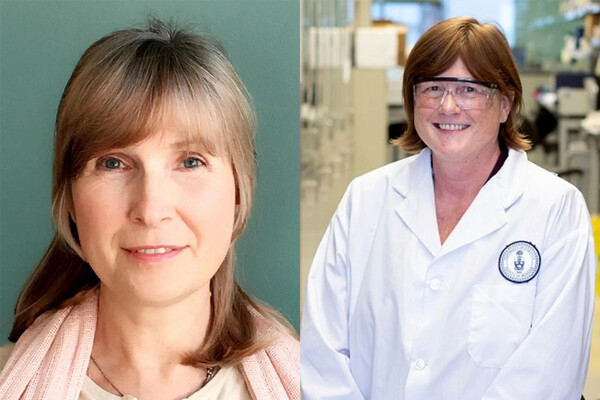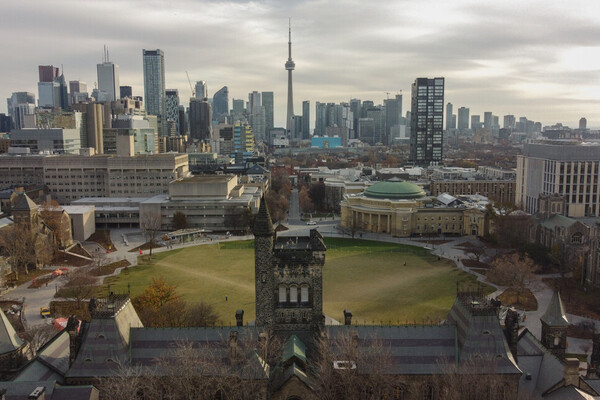'An Antidote to Despair'

It was while reading an obscure play from the 17th century that Professor Heidi Craig first became interested in rag pickers. The work was unusual because it gave voice to marginalized women who played an essential role in papermaking — and thus in spreading the works of Shakespeare and Milton.
Craig, herself a Shakespeare scholar, began to see connections between this undervalued group and today’s e-waste workers in poor countries — people who pick through the discarded laptops, printers and other by-products of modern literary production.
It’s a profound sign of the times that an English professor engrossed in the 16th and 17th centuries now also deploys her storytelling expertise to advance health, climate and labor justice. And Craig is able to connect with a huge range of experts from the Temerty Faculty of Medicine and across U of T as a member of SDGs@UofT — the University’s fledgling hub for the study of the United Nations Sustainable Development Goals (SDGs).
On this Earth Day, Craig wonders, if a Shakespeare scholar sees a role for herself in today’s global movement for peace and prosperity, is it a stretch to believe that every faculty member, every student, every researcher at U of T has a similar role to play?
“In order to live in this world, we need to turn things around — and rapidly,” says Craig. “Being part of this wider initiative with like-minded people is an antidote to despair. It provides not only hope, but the promise of action, which is what we truly need.”
How to Galvanize a Planet
The 193 member countries of the United Nations ratified the 17 SDGs in 2015. Each of the goals — such as no poverty, zero hunger, gender equality, climate action — make up a sort of global blueprint for peace and prosperity. They represent a path through the wilderness of burning forests, flooded cities, widening inequality; a vision that the world’s wickedest problems didn’t arise in a vacuum, and won’t be solved individually. The SDGs invite people to think about oceans, land, peace, education, consumption, production, health and wellbeing as being deeply interrelated, and to use every bit of the globe’s expertise and experience to improve them together.
And to galvanize the world, the UN set a deadline of 2030.
Today, nobody seriously thinks that deadline will be met. Whether this first set of goals was ever realistic has been debated for a decade, but then came a staggering pandemic. And even if COVID had never happened, it turns out to be very difficult to do things differently.
Part of the problem that first time around was that universities were not given a seat at the table, says Professor Joseph Wong, U of T’s Vice President, International. And universities can seed real change.
“The SDGs require innovative solutions, and universities are where cutting-edge innovations are discovered,” says Wong. “Artificial intelligence and machine learning were born out of the university setting. COVID vaccines were discovered in university labs. Gendered analysis and cultural context — both critical for the SDGs — happen here. We push the knowledge envelope and contribute to evidence-based policy, so the world has the supporting data for its decisions.”
Wong is one of many U of T leaders determined that universities will be part of the next set of goals.
The idea to form an Institutional Strategic Initiative (ISI) around the SDGs was birthed from a “17 Zoom Rooms” event that was hosted at the University in 2020. Professor Erica Di Ruggiero, the ISI’s research director, and its associate director, Nicoda Foster, developed much of the ISI’s vision through extensive consultations and their shared passion for the SDGs and interdisciplinary, intersectional approach to global health.
“The SDGs tackle problems that can never be solved by one sector or one discipline alone,” says Di Ruggiero. “Many researchers see themselves working on one or two of them, but we can be that nexus at the University showing how to work on four or five together.”
Di Ruggiero offers food as an example. For researchers working on food security, goal #2 (no hunger) would likely be the most important. But food security is also connected to climate change, labor equality, access to clean water, land stewardship, and more.
“Everyone relates to food, but it’s also a topic that connects to housing, mental health, to communities,” she says. “What is the connection between food deserts and chronic disease or early childhood development issues? And there’s a link between food and gender when we consider that women often make food decisions in households.”
When they began setting up SDGs@UofT, Foster recalls that she and Di Ruggiero encountered disbelief among faculty that they could address all 17 of the goals. They created a research agenda with four thematic areas:
- identifying transition pathways;
- measuring progress toward achieving the SDGs;
- designing interventions and instruments for sustainability;
- considering the synergies and trade-offs within and across the SDGs.
The themes are a way to catalyze research that transcends disciplines — to encourage research teams from diverse fields to integrate their research and shift paradigms in thinking about solving wicked problems.
Reaching Across Silos
Professor Nidhi Subramanyam, another member of SDGs@UofT, works with engineers to understand why different parts of cities have more access to water than others.
“As a social scientist, I have theories that people with more political power get more water,” says Subramanyam, of the department of geography and planning. “But working with an engineer, I might find that a pipe is not the right size in a certain place — and that’s something we can fix.
“That’s the kind of dialogue which encourages you to question your assumptions and not get caught up in a certain way of thinking,” she adds. “But I also help the engineers to understand that that water may not be flowing in another place because of politics.”
In addition to engineers, Subramanyam is excited about meeting scholars like Craig, the English professor, through their mutual involvement in SDGs@UofT.
“There are a lot of humanities scholars who are so creative in telling stories, interpreting human action, or in translating research to a lay audience — people who could then be moved by some of the more hard-core science or social science work we might be doing,” she says. “It would be great to have them on the team.”
Foster and Di Ruggiero are well aware that at a massive university like U of T, faculty members are often hungry for connections outside their departments. The SDGs@UofT initiative is about breaking down the siloes that limit those connections.
That promise is a major draw for Professor Robert Schertzer, a political scientist who studies the use of nationalism on both the left and right in discourse around climate change.
“Even our own departments are sometimes too big for collaboration with your own colleagues without something to bring you together,” he says. “So to collaborate across divisions is impossible without some kind of catalyst to say, ‘Here’s some money; here’s a forum; here are events. Why don’t you come together and create a community?’”
Schertzer analyzes the effectiveness of environmental messaging within countries. He is able to help researchers in other fields to understand how policy decisions are made — why, for example, the climate debate and different policy solutions have become so politicized and polarized. He is particularly eager to collaborate with environmental scientists, sociologists, and media experts in his SDG research.
Schertzer recalls that during his graduate work at the London School of Economics, its then-director was fond of saying that the faculty dining room was the school’s greatest invention.
“He said it’s because faculty and grad students would come together over dinner and actually talk. And we don’t do that anymore,” says Schertzer. “The way in which we work and collaborate is different today. We read each other’s work and say, ‘Oh, that’s interesting.’ But initiatives like SDGs@UofT serve as that common dining room where we can all come together. And that’s the way true interdisciplinary insight happens.”
Students Encouraged to Participate
Students, too, have a very large role to play in the SDGs, say Foster and Di Ruggiero. All U of T students are encouraged to get involved through SDGs@UofT’s Student Advisory Committee. One recent member, Sherry-Ann Ram, is exploring sustainability in engineering education and how to motivate engineers to think more about sustainability in their practice. She considered the SDGs when developing a framework to help assess engineering education; and considers sustainability from a broader perspective.
“In traditional engineering, there’s a lot of focus on efficiency and cost,” says Ram, who once worked as an engineer in the oil and gas industry. “We really need to broaden our minds. How do our inventions affect society and culture? How do we work with people in other fields? The SDGs can help engineers to think deeply about their own experiences and biases, to expand their thinking.”
To help Ram and others involved in SDGs at U of T, Di Ruggiero and Foster have set up a Scholars Academy, a think tank with objectives in research acceleration, trainee empowerment, public engagement, and knowledge mobilization to maximize impact. The Academy is open to any U of T faculty member, student or staff member with an interest in the mandate of SDGs@UofT.
As Heidi Craig sees it, we live in the new age of the Anthropocene — thanks to climate change, the wall between human history and natural history has been breached. So, it’s only right that the walls of academia, of disciplines, and of knowledge, should also come down.
“While humans previously saw themselves as separate from natural history, we now recognize ourselves as geological agents who are transforming the most fundamental processes of the planet, such as the chemistry of the atmosphere and the acidity of the oceans,” she says. “As a result, everything that we once took for granted in terms of scholarly boundaries no longer holds: those walls have been breached. This creates opportunities to find new solutions.
“I believe in serendipity: once you meet new people and have new conversations, you learn things that you would not have expected — things that can change your research, transform your life, and build lasting connections.
“That’s why I think everyone has something to contribute to these Sustainable Development Goals. No matter if you’re a social scientist or a humanist or a natural scientist, it depends on us.”
Learn more about SDGs@UofT and how you can get involved as a faculty member, student or staff member.
News


